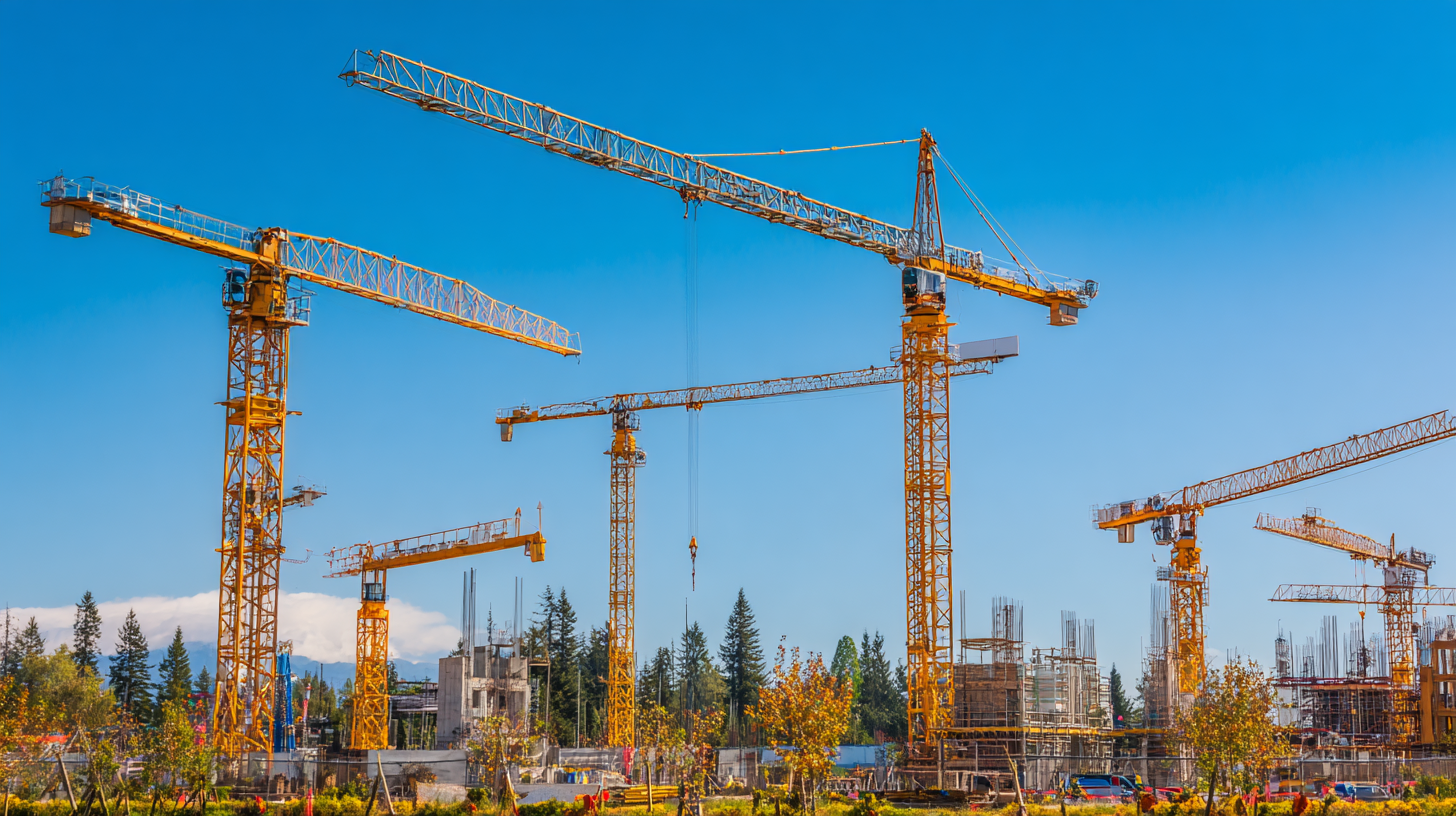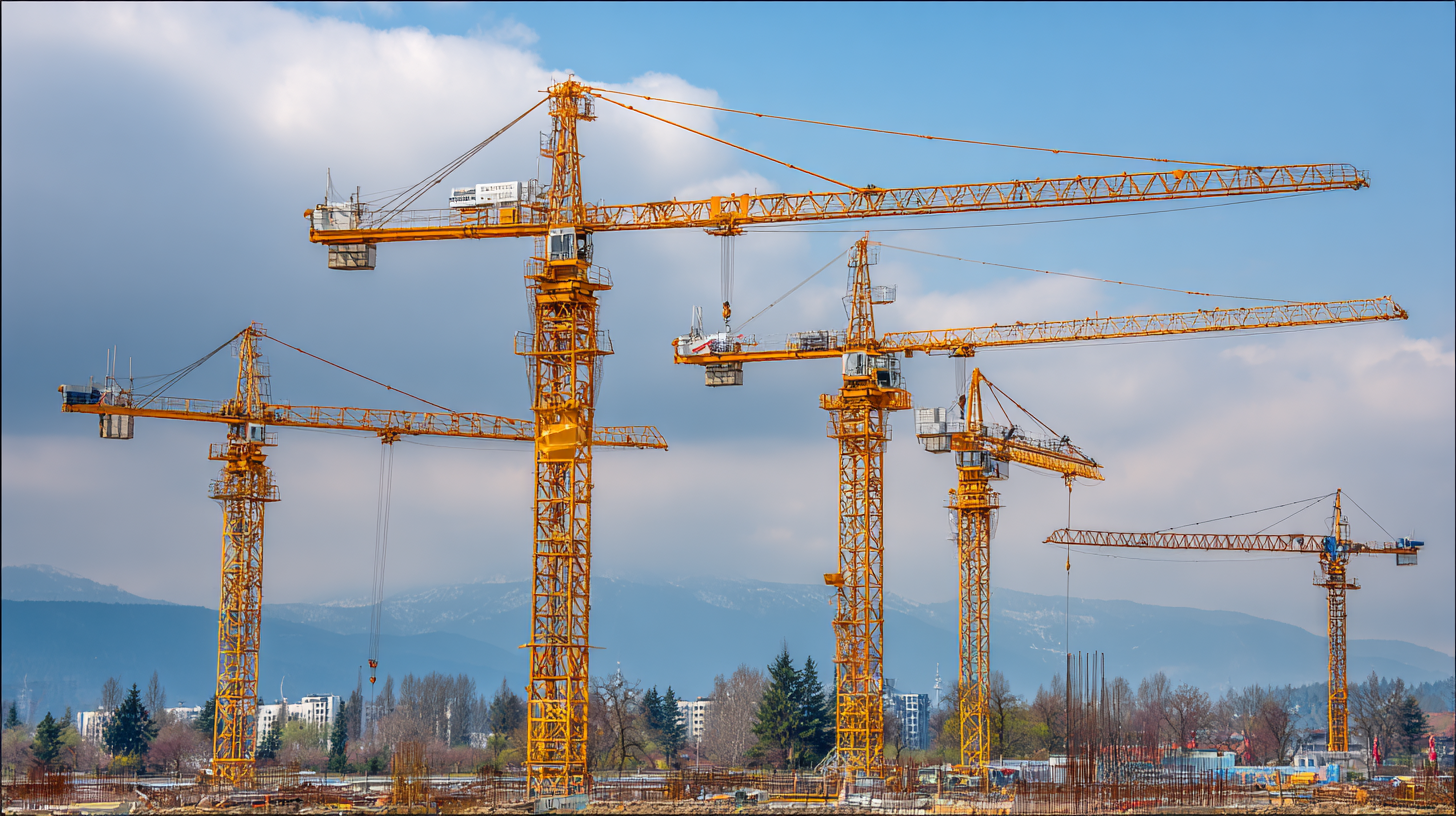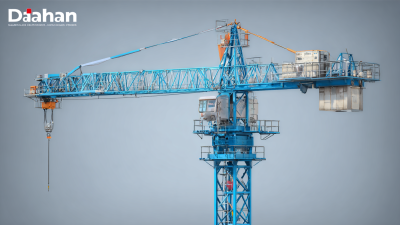When it comes to construction projects, selecting the right equipment is crucial for ensuring efficiency, safety, and cost-effectiveness. The demand for cranes has surged in recent years, with the global construction equipment market expected to reach $263 billion by 2026, as reported by industry analysts.
 Among various options, the used Liebherr tower crane stands out due to its renowned reliability and performance in diverse construction environments. Liebherr, a leader in crane manufacturing, offers models that are not only capable of handling heavy loads but also feature advanced technology for improved operational efficiency. As the construction industry increasingly leans towards sustainable practices, investing in a used Liebherr tower crane can significantly mitigate costs while maintaining high standards of safety and productivity. Understanding the key factors to consider when choosing a used Liebherr tower crane is essential for construction professionals looking to optimize their resources and project outcomes.
Among various options, the used Liebherr tower crane stands out due to its renowned reliability and performance in diverse construction environments. Liebherr, a leader in crane manufacturing, offers models that are not only capable of handling heavy loads but also feature advanced technology for improved operational efficiency. As the construction industry increasingly leans towards sustainable practices, investing in a used Liebherr tower crane can significantly mitigate costs while maintaining high standards of safety and productivity. Understanding the key factors to consider when choosing a used Liebherr tower crane is essential for construction professionals looking to optimize their resources and project outcomes.
When assessing the condition of a used tower crane, several critical factors must be taken into account to ensure safety and reliability on construction sites. The recent tragic collapse of a hotel under construction underscores the vital need for thorough evaluations. First, examine the crane’s structural integrity, including its boom, mast, and base, for signs of fatigue or damage. Look for visible wear or corrosion, which can compromise stability. Additionally, inspect the functional components such as the hoist mechanism and controls to confirm they are in good working order.

Moreover, historical maintenance records play a crucial role in understanding the crane’s operational history and any previous damages it might have sustained. Cranes that have been well-maintained and regularly serviced are generally more trustworthy. Furthermore, consider the machinery's age and usage history, as equipment that has been overused may present more risks. Prioritizing these assessments can help prevent potential hazards, ensuring the safety of both the workers and the public at large.
When selecting a used Liebherr tower crane for your construction projects, understanding the load capacity requirements is crucial. Different projects have varying demands, and the load capacity of a crane often dictates its suitability for specific tasks. According to a report by the International Federation of Crane Operators (IFCO), the load capacity of tower cranes can range from 5 tons to over 30 tons, significantly affecting their application in large-scale projects like high-rise buildings or infrastructure developments.
It is essential to evaluate the maximum weight of materials that will be handled at any given time. For instance, a recent study published by the Construction Industry Institute (CII) revealed that load capacity assessments are pivotal in enhancing operational efficiency, revealing that proper crane capacity planning can improve project timelines by up to 20%.
Additionally, the structural integrity of the crane must match the load demands, as Liebherr cranes are engineered with robust designs to accommodate increased load factors, which are often stipulated by local regulations and codes. Understanding these parameters ensures that contractors choose the right crane to enhance safety and productivity on site.
When evaluating a used Liebherr tower crane, understanding its age and operational history is crucial for making an informed purchase decision. The age of the crane gives insights into its design and technology, as newer models often feature enhanced safety mechanisms and efficiency improvements. Generally, cranes are expected to have a lifespan of around 10-20 years, but factors such as maintenance routines and environmental conditions can significantly impact their durability. It is essential to inquire about the manufacturing year and any significant upgrades or modifications made during its operational life.

In addition to age, the operational history reveals how the crane has been utilized over the years. Prospective buyers should look into its usage hours, the types of projects it was involved in, and how frequently it underwent maintenance checks. A crane that has been subjected to heavy use in harsh conditions may exhibit more wear and tear compared to one that has been used sporadically. Additionally, reviewing maintenance records can provide assurance of its reliability and reveal any past issues that might affect its current performance. Understanding both the age and operational history ensures that buyers choose a Liebherr tower crane that meets their construction needs and budget.
When selecting a used Liebherr tower crane, one of the most critical aspects to consider is compliance with current safety standards and regulations. Occupational Safety and Health Administration (OSHA) guidelines, along with the American National Standards Institute (ANSI) regulations, dictate strict safety requirements for cranes in construction. According to a 2020 report by the National Institute for Occupational Safety and Health (NIOSH), about 22% of crane-related fatalities occur due to non-compliance with these regulations, underlining the importance of understanding and verifying compliance when making a purchase.
It is essential to conduct a thorough inspection of the crane's safety features, including its load capacity, control systems, and operator safeguards. The 2021 Global Crane Safety Report emphasizes that cranes that meet or exceed safety standards not only reduce the risk of accidents but also enhance overall productivity. Be sure to verify maintenance records and any certifications provided during the buying process. Knowing that a used Liebherr tower crane has a solid safety compliance history can provide peace of mind and ensure that your construction project proceeds without jeopardizing safety.
| Model | Max Load Capacity (tons) | Height (m) | Boom Length (m) | Year of Manufacture | Safety Standards Compliance | Price (USD) |
|---|---|---|---|---|---|---|
| LTC 1045-3.1 | 10 | 45 | 30 | 2015 | Yes | €50,000 |
| LTM 1200-5.1 | 12 | 48 | 35 | 2013 | Yes | €65,000 |
| LTM 1500-8.1 | 15 | 50 | 40 | 2016 | Yes | €85,000 |
| LTC 1050-3.1 | 10 | 46 | 32 | 2017 | Yes | €55,000 |
| LTM 1800-8.1 | 18 | 60 | 45 | 2018 | Yes | €95,000 |
When considering the purchase of a used tower crane, particularly for construction needs, negotiating the price can be a crucial aspect of the buying process. Understanding the market value of the crane model you’re interested in is vital. Research recent sales and conditions of similar units to gauge a fair price range. This knowledge not only empowers you but also provides a strong foundation for negotiation with sellers.
During negotiations, don’t hesitate to address the crane's maintenance history and overall condition. If possible, request documentation that verifies its operational history and any repairs it may have undergone. Highlighting any potential repairs the crane may need can further bolster your negotiation position, allowing you to justify a lower offer. Additionally, consider the timing of your purchase; market dynamics can shift, influencing demand and pricing.
Lastly, being ready to walk away from a deal is an essential tactic. If the seller is unwilling to meet your price or provide additional assurances about the crane's condition, having the option to explore other listings shows that you are an informed buyer. This could encourage the seller to reconsider their stance, potentially leading to a more favorable deal for you.








